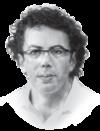
WASHINGTON (Reuters) - Federal Reserve officials remain wary about the ongoing risks of the coronavirus pandemic and are committed to bolstering the economy until its recovery is more secure, minutes of the U.S. central bank’s latest policy meeting showed on Wednesday.
With their own forecasts projecting the strongest run of U.S. economic growth in nearly 40 years, “participants agreed that the economy remained far from the (Fed’s) longer-run goals and that the path ahead remained highly uncertain,” the minutes from the March 16-17 meeting said.
“Participants noted that it would likely be some time,” before conditions improved enough for the central bank to consider reducing its current level of support.
Though several policymakers at the meeting indicated they thought interest rates might need to increase sooner than anticipated by the bulk of their colleagues, and perhaps as soon as next year, there was little sense of urgency around that issue in the minutes.
Labor markets were improving, but remained gashed by the pandemic. Inflation would pick up, the minutes noted, but likely subside next year. A recent jump in U.S. Treasury yields was “generally viewed ... as reflecting the improved economic outlook.”
Only a couple of the officials cited possible financial stability risks flowing from the Fed’s current policy of maintaining its overnight benchmark lending rate near zero and buying $120 billion in bonds every month – a setting the Fed says is locked in until the economy is well on its way to being healed.
That process is underway, with the economy buoyed by the Fed’s support, massive fiscal spending pushed by the White House and passed by Congress, and an accelerating COVID-19 vaccination program.
But even with a “brighter outlook,” Fed Governor Lael Brainard said on CNBC that the wounds to the economy remain deep, and the Fed’s new approach is to not act until its employment and inflation goals are secured.
Policymakers expect “considerably better outcomes on growth, and employment and inflation” in coming months, Brainard said. “But that is an outlook. We are going to have to actually see that in the data,” and with millions of jobs still missing due to the pandemic “we have some distance to go.”
Slideshow ( 2 images )
But progress may also come fast as the economy reopens and the impact of the vaccines is felt. The U.S. economy added nearly a million jobs in March, and that pace may well continue as more activities are considered safe to resume.
Bob Miller, BlackRock’s head of fixed income for the Americas, said he felt the Fed could not for much longer paper over the gap between the economy’s continued progress and its own insistence on maintaining policies designed for a crisis.
“It’s difficult to understand how policy is properly calibrated now. The same emergency stance remains despite the absence of emergency conditions,” Miller wrote. “The unwillingness to acknowledge the degree of improvement looks increasingly challenged,” a stance that may need to change perhaps by the Fed’s June policy meeting.
‘WILLING TO BE BOLDER’
Prices on a variety of securities affected by the Fed’s target interest rate show investors expect the central bank to raise rates sooner than its own projections indicate.
Chicago Fed President Charles Evans, who agrees with the majority of his colleagues that the Fed’s benchmark overnight interest rate will likely need to stay near zero through 2023, said he envisions an uncomfortable period of higher inflation this year. But he insisted the Fed shouldn’t budge until it’s sure that prices won’t just fall back again below its 2% inflation goal.
“We really have to be patient and be willing to be bolder than most conservative central bankers would choose to be,” he told reporters after an event organized by the University of Nevada, Reno.
Speaking separately at a virtual session organized by UBS, Dallas Fed President Robert Kaplan reiterated his longstanding worries that low interest rates and the Fed’s bond purchases could fuel excesses in markets.
Once the pandemic has receded, Kaplan said, the Fed should pare its bond-buying and move toward raising rates in 2022, and he signaled he may even be open to doing both at once.










